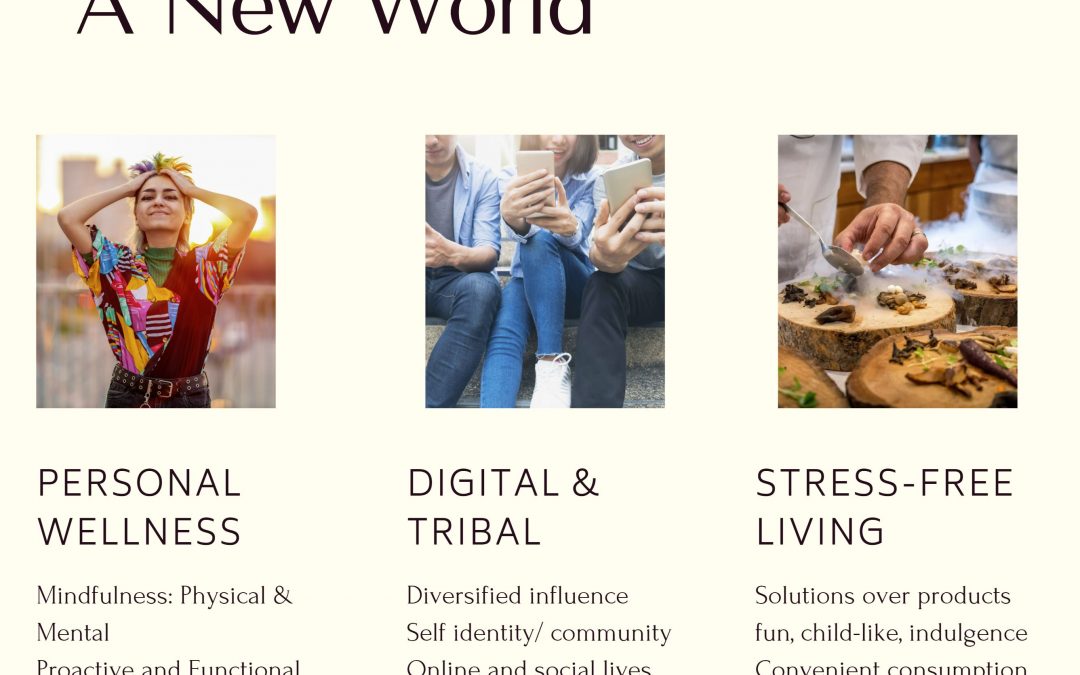Hamutal (Tula) Schieber recently talked about Food Trends at a conference. A version of this presentation is available here:
It is true that speed or ease of preparation, convenience, taste, indulgence and health are not new trends. But each of these considerations has changed significantly in the last decade and especially after the Coronavirus Pandemic, and we reviewed how consumers perceive them. Furthermore: who influences consumers today? How do consumers decide what is healthy and what is a treat, whether to make a meal or buy it, whether to go to a store or buy online? What external factors influence the choice of brands and packaging – such as trends, social media, independent production, craftsmanship, ethics, sustainability, contribution to society?
We discussed identity and tribes: Food is usually not only functional but an experience that also touches self-identity. In a world where self-definition becomes more important than ever, we see decision-making that directly affects food.
There are several content worlds that meet the needs of the “AND” consumer: for example, plant-based foods are perceived as healthy, are tribal, speak to ethics and the environment. This is why making them more accessible, convenient and tasty, propels the category tremendously. Beyond “substitutes”, the conversation shifts slowly but surely to the vegetables in the center. At the same time, the substitutes are becoming better than ever.
At the same time, the world of experience – world flavors, indulgence, AFH at-home – is accessible and becomes more comfortable with ready-made chef meals to home, interesting ingredients and ready-to-eat meals or kits and the health offering is through limiting calories, allergens, or health benefits. We are seeing a trend of spicy food – Sichuan cuisine, Korean food. It’s part of the desire to experience, to experience to the maximum.
In addition, consumers are looking for a higher value for money – and also a reduction in trash. Therefore, there is a trend of “how to use leftovers” on social media, and brands are already jumping on the bandwagon. In addition, a certain transition to buying bulk + reusable, which manufacturers are starting to push. A transition to frozen food also makes it possible to decrease trash, feel like you always have food at home, and get fresh food and a clean label. But frozen isn’t necessarily perceived that way by consumers, especially in regards to both health and sustainability. With the purchase of freezers during COVID-19 and the offering of BFY meals, we expect the category to enjoy growth.
The impact of social media is double: one – where the influence comes from; the other – how what I make will look in social, what it says about me, what tribe I belong to. We are already seeing the boom in online shopping – we will also see shopping in social commerce and from consumer-to-consumer.
Personalization – Consumers are ahead of the market and are not waiting for a customized diet. They find programs that offer customization, order meals and products according to their allergies and dietary preferences, and tailor their social media, online communities and content in accordance with their food tribes. Brands are becoming more specific on their own, and there are more product offerings that are “both and both” – keto and vegan; dairy-free and gluten-free; etc. Functional food will increasingly adapt to the need state of a specific consumption opportunity.
The most important thing for manufacturers continues to be to reduce stress: Allow to spend more time eating at the right time (for example – add sauces and dips, offer slow eating, experiential shopping) but allow them to buy and consume quickly when needed (snackable everything). Understand that consumers need solutions – the stress of lunch to school, the stress of what to prepare for dinner. Offer taste, experience and adventure – at the right price point and with limited calories. Offer healthier food that is also harmless to the environment but without compromising on taste and texture. Consumers expect producers to help them to become better people – this is both a threat and an opportunity.


Trackbacks/Pingbacks